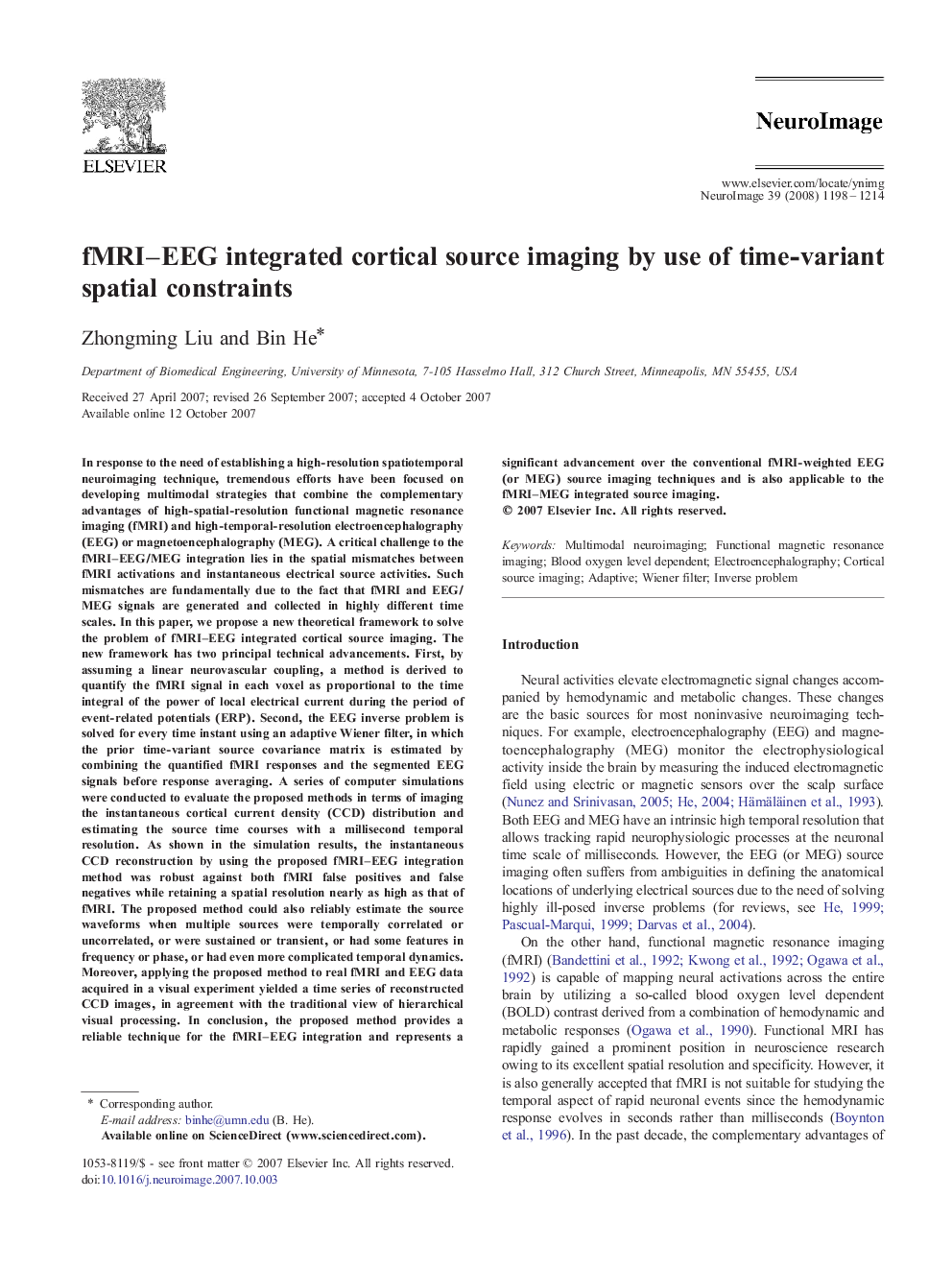| کد مقاله | کد نشریه | سال انتشار | مقاله انگلیسی | نسخه تمام متن |
|---|---|---|---|---|
| 6040016 | 1188833 | 2008 | 17 صفحه PDF | دانلود رایگان |
عنوان انگلیسی مقاله ISI
fMRI-EEG integrated cortical source imaging by use of time-variant spatial constraints
دانلود مقاله + سفارش ترجمه
دانلود مقاله ISI انگلیسی
رایگان برای ایرانیان
کلمات کلیدی
موضوعات مرتبط
علوم زیستی و بیوفناوری
علم عصب شناسی
علوم اعصاب شناختی
پیش نمایش صفحه اول مقاله

چکیده انگلیسی
In response to the need of establishing a high-resolution spatiotemporal neuroimaging technique, tremendous efforts have been focused on developing multimodal strategies that combine the complementary advantages of high-spatial-resolution functional magnetic resonance imaging (fMRI) and high-temporal-resolution electroencephalography (EEG) or magnetoencephalography (MEG). A critical challenge to the fMRI-EEG/MEG integration lies in the spatial mismatches between fMRI activations and instantaneous electrical source activities. Such mismatches are fundamentally due to the fact that fMRI and EEG/MEG signals are generated and collected in highly different time scales. In this paper, we propose a new theoretical framework to solve the problem of fMRI-EEG integrated cortical source imaging. The new framework has two principal technical advancements. First, by assuming a linear neurovascular coupling, a method is derived to quantify the fMRI signal in each voxel as proportional to the time integral of the power of local electrical current during the period of event-related potentials (ERP). Second, the EEG inverse problem is solved for every time instant using an adaptive Wiener filter, in which the prior time-variant source covariance matrix is estimated by combining the quantified fMRI responses and the segmented EEG signals before response averaging. A series of computer simulations were conducted to evaluate the proposed methods in terms of imaging the instantaneous cortical current density (CCD) distribution and estimating the source time courses with a millisecond temporal resolution. As shown in the simulation results, the instantaneous CCD reconstruction by using the proposed fMRI-EEG integration method was robust against both fMRI false positives and false negatives while retaining a spatial resolution nearly as high as that of fMRI. The proposed method could also reliably estimate the source waveforms when multiple sources were temporally correlated or uncorrelated, or were sustained or transient, or had some features in frequency or phase, or had even more complicated temporal dynamics. Moreover, applying the proposed method to real fMRI and EEG data acquired in a visual experiment yielded a time series of reconstructed CCD images, in agreement with the traditional view of hierarchical visual processing. In conclusion, the proposed method provides a reliable technique for the fMRI-EEG integration and represents a significant advancement over the conventional fMRI-weighted EEG (or MEG) source imaging techniques and is also applicable to the fMRI-MEG integrated source imaging.
ناشر
Database: Elsevier - ScienceDirect (ساینس دایرکت)
Journal: NeuroImage - Volume 39, Issue 3, 1 February 2008, Pages 1198-1214
Journal: NeuroImage - Volume 39, Issue 3, 1 February 2008, Pages 1198-1214
نویسندگان
Zhongming Liu, Bin He,